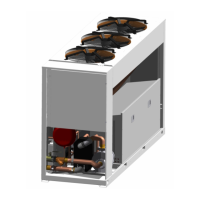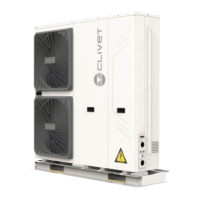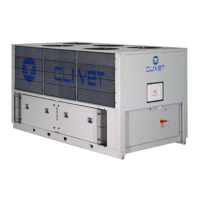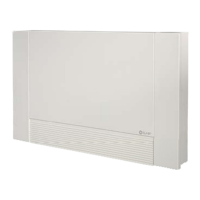50
®
GENERAL
- ROUTINE MAINTENANCE -
IMPORTANT
AUTHORISED PERSONNEL SHOULD BE PRESENT WHEN THE UNIT IS STARTED FOR THE FIRST TIME EACH SEASON, SO
AS TO PERFORM THE CHECKS DESCRIBED ABOVE, AS WELL AS THE CHECKS ON THE REFRIGERANT CIRCUIT, AS
DESCRIBED IN THE SECT. ON "START-UP"
IMPORTANT
BEFORE STARTING ANY MAINTENANCE OR CLEANING OPERATIONS ON THE UNIT, MAKE SURE IT IS NOT
POWERED
Few operations performed carefully and regularly may avoid the need for special maintenance.
This section is designed for the end user, and is extremely important for the correct operation of the unit over time. The operations to
be performed do not require specific technical knowledge and regard simple checks on the components of the unit.
The coil must be able to offer the maximum heat exchange: check its surface to make sure it is free from dirt or dust. Use a brush to
remove all impurities. Check that the aluminium fins are not damaged or bent; if this is the case, "comb" the coil until using a special
tool so as to restore the initial situation of optimum air flow. Use a jet of pressurised air to clean the aluminium surface of the coil,
making sure to point the jet in the opposite direction to the movement of the fan. Keep the jet parallel to the direction of the fins, so as
not to damage them. Alternatively use a vacuum cleaner to vacuum up the impurities from the air inlet side.
Visually check that there are no leaks in the water circuit. Contact specialist personnel in the event where maintenance is
required.
If the unit is not operated in the winter season and exposed to temperatures below 0°C, make sure the water is completely emptied
from the system (only in the event where antifreeze fluids are not used).
Dirt and the possible formation of lime scale inside the exchanger may cause malfunctions in the refrigerant circuit: have specialist
personnel periodically check the efficiency of heat exchange and, if necessary, clean using suitable chemical products.
Check the condition of the parts making up the structure.
Special attention should be paid to the steel parts. Paint so as to eliminate or reduce oxidation at the points in the unit where this
problem may occur. Check that the panelling is fastened correctly. Poor fastening may give rise to malfunctions and abnormal noise
and vibrations. Check the condition of any gaskets.
Periodically have the tightness of the electrical contacts checked by a qualified technician.
ROUTINE MAINTENANCE
STRUCTURE
ELECTRICAL SYSTEM
WATER SYSTEM
EXCHANGE COIL
WATER EXCHANGER
Routine Maintenance
REFRIGERANTS
The table shows the saturated condensing and evaporation temperatures according to the pressure.

